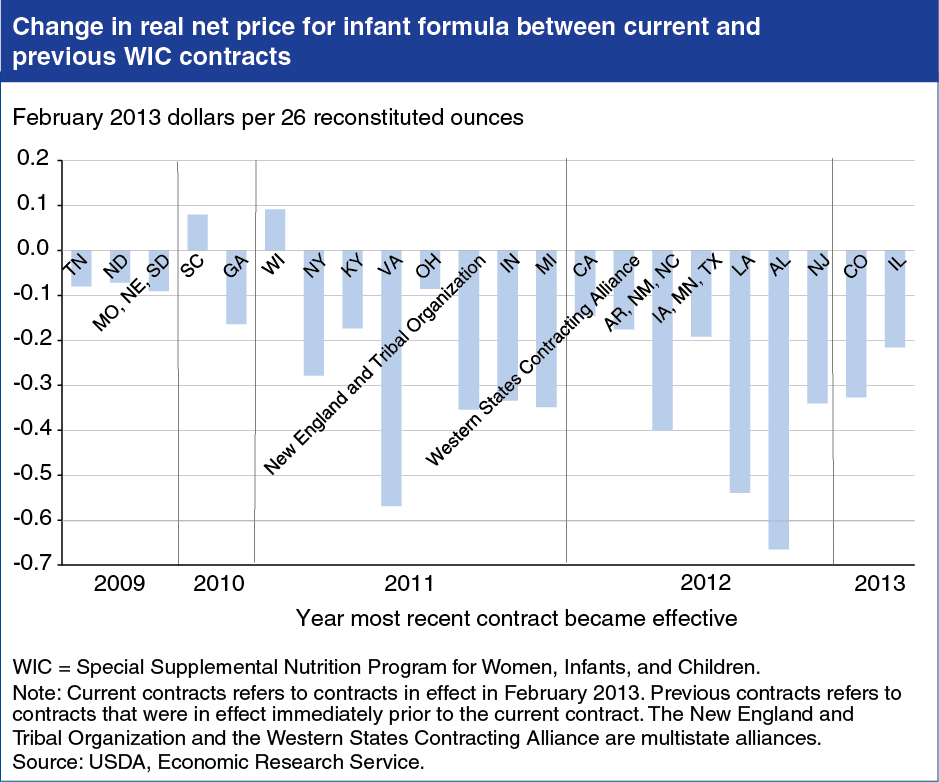Infant formula costs decreased in 20 of 22 WIC contracts awarded after 2008
- by Victor Oliveira
- 4/30/2014

The Special Supplemental Nutrition Program for Women, Infants, and Children (WIC) is USDA’s third largest food and nutrition assistance program, with fiscal year 2013 expenditures totaling $6.4 billion. To reduce costs, WIC State agencies enter into cost-containment contracts with infant formula manufacturers. Typically, a manufacturer gives the State agency a rebate for each can of formula purchased through the program, in exchange for the exclusive right to have its formula provided to WIC participants in the State. Contracts are awarded to the manufacturer offering the lowest net price (the manufacturer’s wholesale price minus the rebate). A recent ERS study found that among the 46 WIC State agencies that awarded new rebate contracts after December 2008, nearly all paid lower real net prices under the new contracts. Real net prices decreased by an average 43 percent—or 23 cents per 26 reconstituted fluid ounces—resulting in total annual savings of $107 million (holding retail markups constant). This chart appears in “Infant Formula Costs to the WIC Program Fall” in ERS’s March 2014 Amber Waves magazine.

